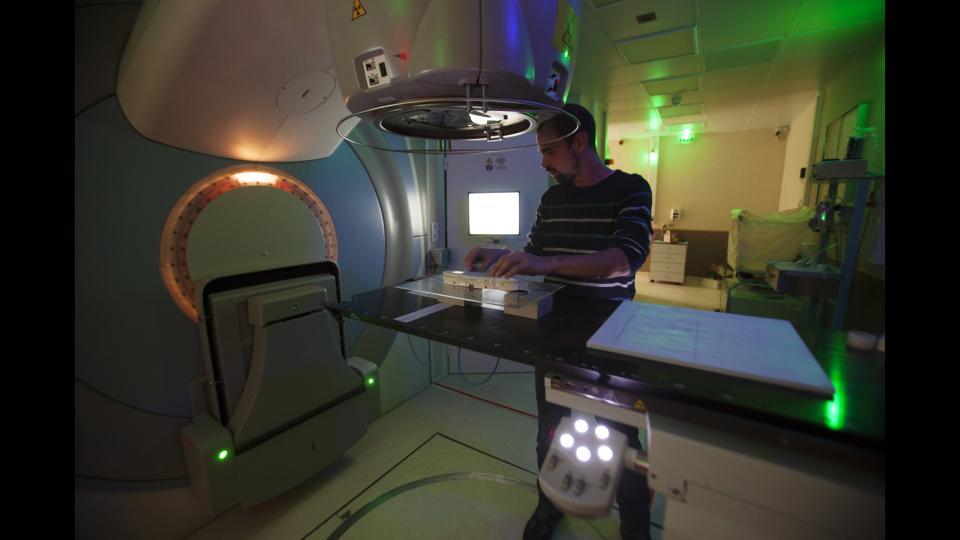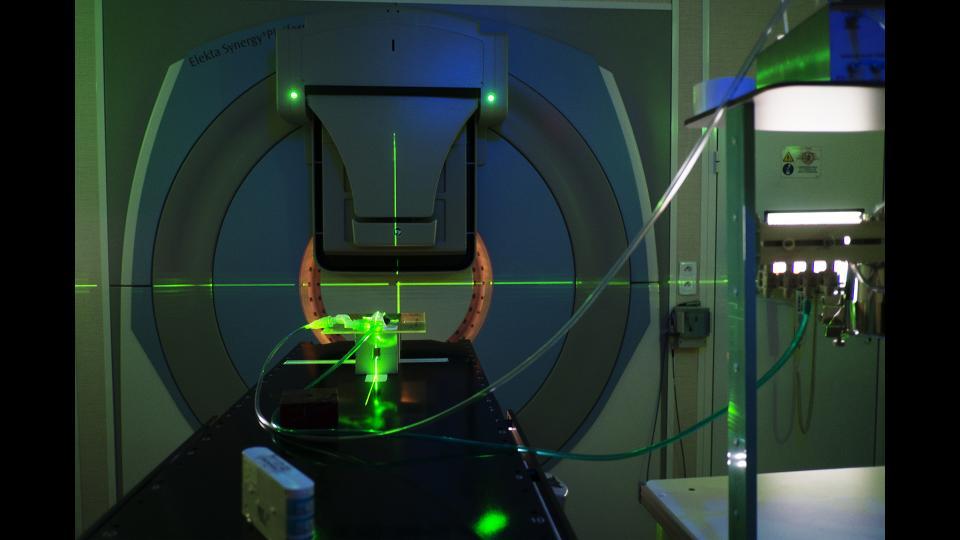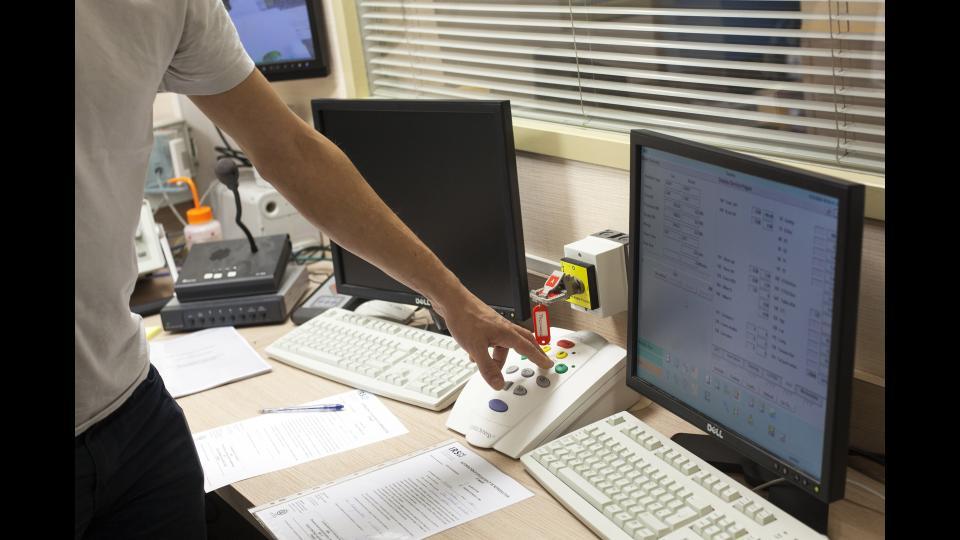The ALPHÉE accelerator
ALPHÉE is an accelerator similar to the radiotherapy machines used in the medical field. IRSN uses it to carry out research dealing with the effects of irradiation on healthy tissue and their evaluation and treatment. The facility is used to irradiate biological samples, i.e. cells, tissue and small animals.
Background and purpose
One of IRSN's tasks is to assess the risks associated with the use of ionizing radiation and to propose solutions, in controlled exposure situations (medical use) or non-controlled situations (accident), for managing the effects on humans. In particular, IRSN is involved in research programs, in partnership with hospitals, universities and other French and international research institutions, to understand the effects of using ionizing radiation in the field of medicine, including radiotherapy.
Radiotherapy facilities have become extremely complex in technical terms in the recent years, with the development of new techniques (combined treatments, new types of radiation, higher dose rates, etc.). In light of these advances, IRSN conducts research projects on the side effects to healthy tissue surrounding the areas treated, and on possible treatment for such effects.
In 2012, IRSN acquired the ALPHÉE accelerator, a radiotherapy linac widely used in the medical sector. It can be used to irradiate a wide range of biological samples, including cells, blood, and animal tissue (rodents and mini-pigs).
Description of the facility
This accelerator has the same features than the facilities used in conventional radiotherapy. It can be used in electron or photon beam mode. There is a choice of five energy levels in the case of electrons (4, 6, 8, 10 and 12 MeV), and three for photons (4, 10 and 18 MV), with dose rates up to 6 Gray (Gy) per minute at the isocenter.
The photon beam is created using a linear accelerator to produce an electron beam that is directed at a tungsten target. This means that ALPHÉE does not use radioactive sources (as was previously the case in irradiation technology, a practice that has now more or less totally fallen out of use in radiotherapy units), and this is one of the facility's major advantages.

It is also possible to make fine adjustments to the shape of the beam, as during radiotherapy, to better target the cancerous tumor and, as far as possible, avoid causing damage to healthy organs. ALPHÉE is also used to simulate treatment planning using conventional radiotherapy planning software. Physicists at IRSN define the dosimetry standards relating to each irradiation configuration and protocols that can be reproduced precisely.
This accelerator is compatible with the SARRP (low-energy micro-irradiation) and MIRCOM (ion microbeam) platforms, especially in terms of the energy and nature of radiation used at IRSN.
Related Research
IRSN uses the ALPHÉE accelerator in a wide range of experimental research programs.
In radiobiology, it is used in the ROSIRIS program, the aim of which is to improve our understanding of the links between early-onset and late-onset effects of ionizing radiation on the organism. The nature of initial radiation-induced cell damage depends on how the energy of an ionizing particle is deposited inside the cell and, consequently, on the physical characteristics of the particle in question. To analyze such damage, one avenue of research seeks to identify the links between biophysical modeling of early radiation-induced events and their delayed effects at molecular and cellular level, by studying the distribution, signaling and repair of initial DNA damage, taking into account the chromatin architecture and depending on the type of ionizing radiation used.

The ALPHÉE platform is also used in research programs designed to develop new post-irradiation treatment protocols. Subjects explored here include extremely serious complications due to radiotherapy, by reproducing localized irradiation exposures representatives of radiotherapy protocols. Research is focused on radiation proctitis, observed in some patients following radiotherapy to treat cancer in the pelvic region (prostate and colon cancer, etc.).

The facility is also suitable for studying local necrosis of irradiated tissue, observed in victims of radiation accidents involving orphan sources. The aim here is to develop surgical techniques, skin grafts and stem cell injection, which are close to becoming standard treatments for radiological burns.
All these experiments are performed in compliance with the regulations and ethical considerations relative to experimenting on animals.
Technical characteristics
- 3 x-ray energy levels: 4, 10 and 18 MV (max. 6 Gy/min)
- 5 electron beam energy levels: 4, 6, 8, 10 and 12 MeV (max. 6 Gy/min)
- Radiation field at 1 m: 0.5 x 0.5 cm2 to 40 x 40 cm2
- Integrated diaphragm and multileaf collimators
